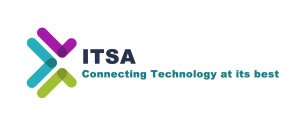Lighting serves a multitude of functions in our everyday lives. It can signal that an appliance or machine is or isn’t properly working, it brightens dark rooms and adds practical and aesthetic value to a diversity of applications, from automobiles to exercise machines. Given the centrality of lighting to our everyday existence, the electronics industry continues to evolve to meet new consumer demands for innovation. Today, many of these innovations are empowered by transparent specialty styrenics.
Evolution in lighting and electronics
Today’s consumer demands more from lighting than just simple illumination. They want products that are sustainably energy-efficient while aesthetically pleasing. They seek out lighting sources that last longer and provide healthier, less blinding light. Buttons, indicators and back lights are expected to add to the style and look of electronics. Due to these expectations, modern lighting design follows both form and function, incorporating more complexity and retrofitted solutions to traditional light bulbs, indicators and lenses.
Beyond consumer preferences, advances in technology have also pushed forward applications and corresponding options in lighting and electronics. For example, today’s LED lights are fitted with lenses to properly distribute 20,000 hours of light compared with an inferior 750 hours offered by traditional incandescent bulbs, all while wasting significantly less energy. Adding greater sustainability due to the use of conductive plastics, such as transparent specialty styrenics, aluminum can be replaced in these kinds of bulbs, also reducing weight.
Whether for lenses, luminaries, buttons or indicators, technological advancements and market demands have raised the bar for lighting approaches, thereby calling for new materials. These materials must offer a critical combination of superior performance characteristics, including exceptional optics, the ability to be molded into fashionable and complex designs, greater sustainability and increased energy efficiency.
Spotlighting material solutions for the electronics industry
Transparent specialty styrenics have emerged as enablers of innovation in the electronics industry. Leveraging its proven expertise in electronics, Styrolution, the global leader in styrenics, offers the industry two material solutions: Nas and Luran. Both possess the unique properties necessary to drive forth innovations in lighting and electronics and provide customers with options in hazy and clear grades. Nas, a styrene methyl methacrylate copolymer (SMMA), offers high light transmission and haze, good flowability and excellent optical performance. Luran is a styrene-acrylonitrile copolymer (SAN) that boasts chemical resistance, brilliant clarity and lower temperatures for processing.
Each of these material solutions help electronics manufacturers address the needs of the industry. For example, Nas provides unparalleled functionality related to high haze, as it achieves 90% haze and 86% light transmission, resulting in a more pleasing, less blinding light. Additionally, the haze provided creates a better distribution of light while masking the unattractive appearance of LED lights. Offering impact-resistance to complement its clarity and strong optical properties, Luran is an ideal material for luminaires and some indicators, and is also available in a high heat grade for more heat-intensive applications. Given the impressive light transmission of Luran, the efficiency of luminaries is not affected meaning that manufactures do not need to employ stronger LEDs to accommodate for a lost in lighting.
In addition to optical properties, both materials provide advantages in processing and cost savings. As Nas and Luran are less dense than aluminum and other plastics, manufacturers receive more material for the same amount of money per kilogram. And, due to their excellent processability and flowability, Nas and Luran can fill bigger and more complex molds and can be used in designs requiring thin walls, all while maintaining a low scrape rate. Not only does this enable designers and manufacturers to make new and complicated applications, it also reduces costs for wasted materials. The materials also have shorter cycle times than other materials, meaning more parts are produced per hour, and require less energy during production, resulting in more sustainable and cost effective production.
Lighting a new path forward
In a rapidly evolving industry like electronics, access to versatile materials is key to the development of new applications. By employing transparent specialty styrenics, such as Nas and Luran, manufacturers are empowered to create more complex lighting and electronic applications, while realising costs and energy savings.
 CIE Components in Electronics
CIE Components in Electronics



